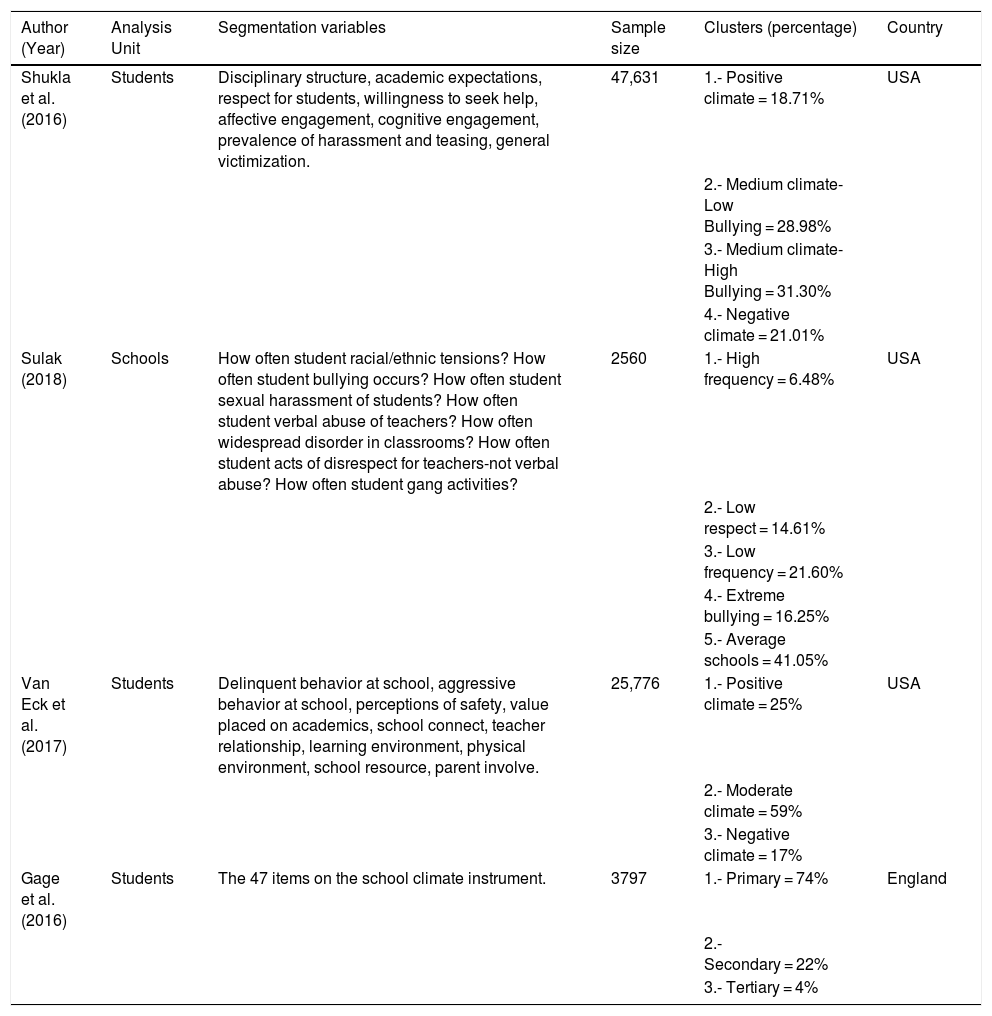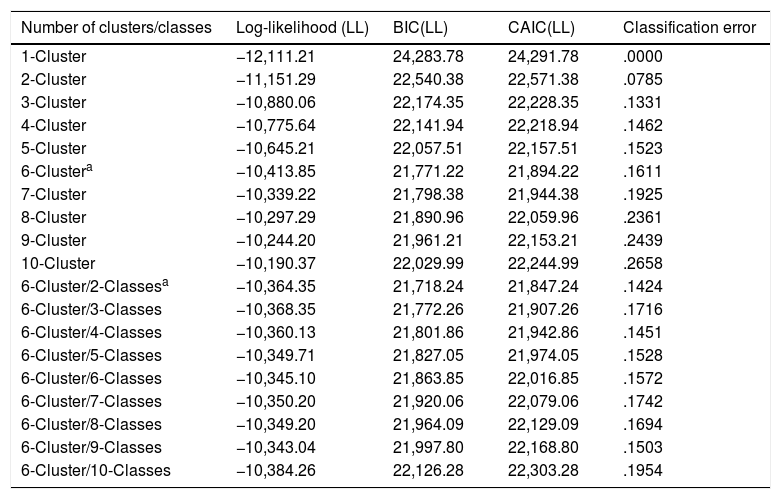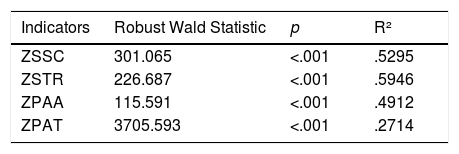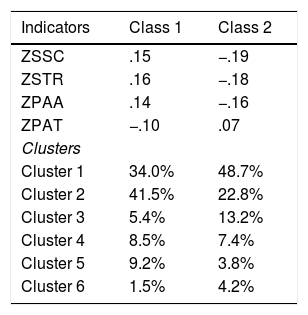Although school climate is related to a variety of positive student outcomes, few studies have explored the heterogeneity of school climate profiles. The purpose of this study was to identify and describe different school climate profiles by evaluating variables at the individual, family and community levels in Chilean students. The sample consisted of 2683 adolescent students 51.2% boys and 48.8% girls), aged between 12 and 20 years (M = 15.78, SD = 1.35) from 32 Chilean schools. Results obtained from a multilevel latent class cluster analysis show that the model with six clusters of students and two classes of schools is the most parsimonious model and with the best fit to the data. School climate profiles were built on the basis of four indicators: school climate (Wald = 301.065; p < .001), student–teacher relationships (Wald = 226.687; p < .001), positive attitude to authority (Wald = 115.591; p < .001) and positive attitude to norm transgression (Wald = 3705.593; p < .001). All of these are useful indicators for profile segmentation. Covariates associated with school climate profiles were identified: at the individual level, age (p = .019) and sex (p < .001); at the family level, family structure (p < .001); at the school level, type of school (p = .002); and at the community level, the perception of insecurity in the neighborhood (p = .011), social control (p = .002) and support (p < .001).
El clima escolar se relaciona con una variedad de resultados positivos en los/as estudiantes, sin embargo, escasos estudios exploran la heterogeneidad de perfiles de clima escolar. El objetivo de este estudio es identificar y describir perfiles de clima escolar evaluando variables individuales, familiares y comunitarias en estudiantes chilenos. La muestra está conformada por 2683 estudiantes (51.2% hombres y 48.8% mujeres), de edades comprendidas entre 12 y 20 años (M = 15.78, DT = 1.35), provenientes de 32 establecimientos educativos. Los resultados obtenidos a partir de una modelización de clases latentes multinivel evidencian que el modelo de seis clústeres de estudiantes y dos clases de establecimientos resulta ser el más parsimonioso y con mejor ajuste. Los perfiles de clima escolar se construyen sobre la base de cuatro indicadores; clima del centro escolar (Wald = 301.065, p < .001), relaciones con el profesorado (Wald = 226.687, p < .001), actitud positiva hacia la autoridad (Wald = 115.591, p < .001) y actitud positiva hacia la transgresión (Wald = 3705.593, p < .001). Todos ellos resultan ser indicadores útiles para la segmentación de los perfiles. Las covariables que se asocian significativamente con los perfiles identificados son: a nivel individual, la edad (p = .019) y sexo (p < .001); a nivel familiar, la estructura familiar (p < .001); y a nivel comunitario, el tipo de establecimiento (p = .002), la percepción de inseguridad en el barrio (p = .011), control social (p = .002) y apoyo (p < .001).











